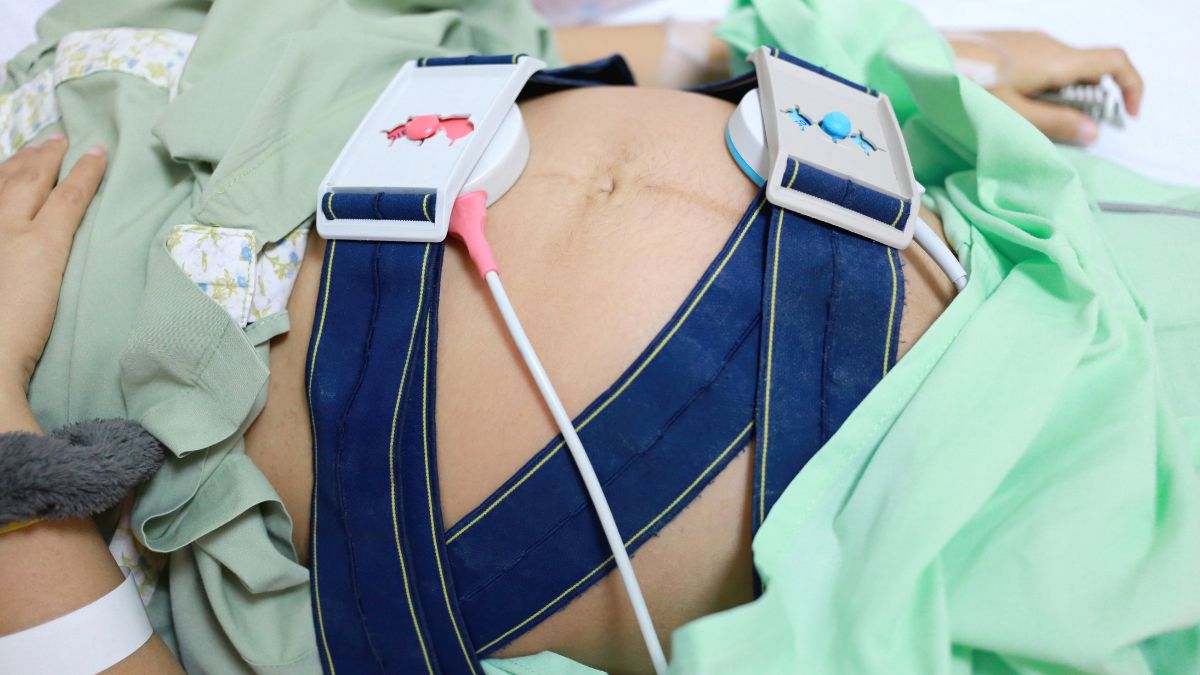Miscarriage, or early pregnancy loss, is a heartbreaking event that affects many women and their families.
The complex biological and emotional process can leave many unanswered questions. One of those questions might be, “How long does the cervix remain open after a miscarriage?”
This is an important medical question, as the period during which the cervix is open can affect a woman’s physical health, potential for infection, and future fertility.
In this comprehensive guide, we will explore the changes in the cervix during a miscarriage, discuss the different types of miscarriages, and provide emotional and medical support resources.
The Cervix’s Role in Pregnancy and Miscarriage
The cervix, the lower part of the uterus that connects to the vagina, plays a crucial role in pregnancy and miscarriage.
During a healthy pregnancy, the cervix stays firm, long, and closed until late in the third trimester.
In the event of a miscarriage, however, changes in the cervix facilitate the expulsion of pregnancy tissue.
What happens to the cervix during a miscarriage?
During a miscarriage, the cervix softens, shortens, and opens (dilates) to allow the passage of pregnancy tissue.
This process is often accompanied by symptoms such as vaginal bleeding and lower abdominal pain.
The duration and degree of cervical dilation vary depending on the type and timing of the miscarriage.
How long does the cervix remain open after a miscarriage?
The timeline for cervical closure post-miscarriage is not universally defined and can vary greatly among individuals.
Generally, the cervix starts to close immediately after the miscarriage process is complete, and it can take anywhere from a few days to a few weeks for the cervix to close fully.
However, it’s important to note that the timing of cervical closure is influenced by several factors, including:
- The gestational age at the time of miscarriage
- The completeness of the miscarriage
- The individual’s overall health
Types of Miscarriages
Understanding the different types of miscarriages can provide insight into the changes in the cervix during each type and how long it may take to close afterward.
Threatened Miscarriage
A threatened miscarriage is characterized by vaginal bleeding before the 20th week of pregnancy but with the cervix closed.
If the pregnancy continues and the baby’s heartbeat is detected on an ultrasound, the cervix will remain closed and firm.
Inevitable Miscarriage
In an inevitable miscarriage, bleeding is accompanied by cramping, and the cervix begins to dilate.
This type of miscarriage cannot be stopped, and the cervix will continue to open until the pregnancy tissue is expelled.
Incomplete Miscarriage
An incomplete miscarriage occurs when some, but not all, of the pregnancy tissue has been expelled from the uterus.
The cervix remains open until all the tissue is passed or removed.
Complete Miscarriage
In a complete miscarriage, all pregnancy tissue is expelled, and the cervix begins to close.
This process can take a few days to a couple of weeks.
Missed Miscarriage
A missed miscarriage is when the fetus dies, but the body has not recognized the pregnancy loss.
The cervix remains closed until the body begins the process of miscarriage.
Recurrent Miscarriage
Recurrent miscarriage refers to the loss of two or more consecutive pregnancies. The changes in the cervix will depend on the specifics of each miscarriage.
Blighted Ovum
A blighted ovum, also known as an “anembryonic pregnancy”, occurs when a fertilized egg attaches itself to the uterine wall, but the embryo does not develop.
The placenta and gestational sac form, but they remain empty without any developing baby.
This condition often leads to miscarriage in the early weeks of pregnancy.
Signs and symptoms of a blighted ovum may initially include typical pregnancy indicators such as a missed period, positive pregnancy test, and morning sickness.
However, as the condition progresses, symptoms may include vaginal bleeding, cramping, and decreased pregnancy-related symptoms like breast tenderness.
A blighted ovum is usually diagnosed through an ultrasound showing the empty gestational sac.
It’s essential to consult with a healthcare provider if any of these symptoms are experienced, as medical evaluation and support are vital in managing this condition.
Emotional Support After Miscarriage
Experiencing a miscarriage can be traumatic, and emotional support is essential to the healing process.
Rather than attempting to bury the pain with drugs or alcohol, allowing space for grief and acknowledging the loss is important.
Reaching out to trusted friends and family, joining support groups, and seeking professional help can be beneficial.
The organizations below provide emotional support to mothers who have experienced a miscarriage—they offer various services, including counseling, support groups, and educational materials.
Please note that availability may vary by location, and it’s always a good idea to consult a healthcare provider for personalized recommendations.
- Miscarriage Association: Website
- Resolve: The National Infertility Association: Website
- Tommy’s: Website
- Sands (Stillbirth and Neonatal Death Charity): Website
- The Compassionate Friends: Website
- Postpartum Support International: Website
- American Pregnancy Association: Website
Medical Support for Miscarriages
Medical support is crucial in managing physical health during and after a miscarriage.
Depending on the type and stage of the miscarriage, different treatment options may be recommended, including expectant management (waiting for the miscarriage to complete naturally), medication, or surgical treatment.
Regular follow-ups with health care providers can ensure physical health is monitored and any complications are promptly addressed.
Frequently Asked Questions (FAQs)
What are the symptoms of a miscarriage in the cervix?
The symptoms of a miscarriage in the cervix encompass several signs, including bleeding that can range from light spotting to heavy flow with clots, cramping and pain in the lower abdomen or back, cervical opening or dilation, and the passing of tissue, such as fetal tissue or a blood clot. Recognizing that these symptoms can vary widely among individuals is crucial, and experiencing them does not necessarily confirm a miscarriage. Prompt medical consultation with a healthcare provider is essential to understand and manage the situation accurately.
Does a low cervix indicate miscarriage?
A low cervix, or a cervix that has changed position to be closer to the vaginal opening, does not necessarily indicate a miscarriage. While changes in the cervix can occur during pregnancy, they can be influenced by various factors, including the time in the menstrual cycle, previous childbirth, and individual anatomical differences. A low cervix alone is not a definitive sign of miscarriage. If there are concerns about miscarriage or any unusual symptoms during pregnancy, it is always advisable to consult with a healthcare provider, such as an obstetrician or midwife, who can conduct a proper examination and provide an accurate assessment based on the individual’s specific situation.
What happens to the cervix before miscarriage?
Before a miscarriage, changes may occur in the cervix, although these can vary widely among individuals. The cervix might begin to soften, dilate, or open as the body prepares to expel the pregnancy tissue. This process can accompany other symptoms, such as cramping and bleeding. However, it’s essential to note that these changes are not definitive indicators of a miscarriage, as the cervix can also change due to other factors during pregnancy. You should report any concerns or unusual symptoms to your healthcare provider.
Can a gynecologist tell if you had a miscarriage in the past?
A gynecologist may be able to determine if a woman has had a recent miscarriage based on a physical examination, medical history, and possibly some diagnostic tests. However, detecting a miscarriage that occurred in the more distant past can be more challenging. No physical signs may indicate a previous miscarriage, especially if it occurred early in pregnancy. The most reliable way for a healthcare provider to know about past miscarriages is through a patient’s self-reported medical history and previous medical records, if available.
Looking Forward: Future Pregnancies After Miscarriage
Understanding the changes in the cervix during and after a miscarriage can provide useful information for future pregnancies.
It’s generally safe to try to conceive again after the cervix has closed, bleeding has stopped, and the woman feels emotionally ready.
However, it’s always recommended to consult with a healthcare provider before trying to conceive again.
Wrapping it Up
While the question, “How long does the cervix remain open after a miscarriage?” is a medical one, it is deeply interconnected with the emotional journey of miscarriage.
By understanding the physical changes during this challenging time, women and their partners can better navigate the emotional and medical landscape of miscarriage, find the support they need, and look forward to future possibilities.
Remember, it’s always important to consult with a healthcare provider for any medical concerns or questions relating to miscarriage and future pregnancies.
And remember…you are not alone.
The information provided in this article is for informational purposes only and is not intended to be a substitute for professional medical advice, diagnosis, or treatment. Always seek the advice of your physician or other qualified healthcare provider with any questions you may have regarding a medical condition. Do not disregard or delay seeking professional medical advice because of something you read in this article.
Article References
- Medline Plus (2022, November 10). Miscarriage – threatened. Retrieved August 23, 2023, from https://medlineplus.gov/ency/article/000907.htm
- Tommy’s (2020, February 10). Missed miscarriage. Retrieved August 23, 2023, from https://www.tommys.org/baby-loss-support/miscarriage-information-and-support/types-of-miscarriage/missed-miscarriage-information-and-support
- Progyny (n.d). What Are the Different Types of Miscarriage? Retrieved August 23, 2023, from https://progyny.com/education/female-infertility/types-miscarriage/
- UCLA Health (n.d.). Recurrent pregnancy loss. Retrieved August 23, 2023, from https://www.uclahealth.org/medical-services/obgyn/conditions-treated/recurrent-pregnancy-loss
- Kaiser Permanente (2023, June 11). Incomplete Miscarriage: Care Instructions. Retrieved August 23, 2023, from https://healthy.kaiserpermanente.org/health-wellness/health-encyclopedia/he.incomplete-miscarriage-care-instructions.uh2809
- Mayo Clinic (2021, October 16). Miscarriage. Retrieved August 23, 2023, from https://www.mayoclinic.org/diseases-conditions/pregnancy-loss-miscarriage/diagnosis-treatment/drc-20354304
- Cleveland Clinic (2021, October 22). Blighted Ovum. Retrieved August 23, 2023, from https://my.clevelandclinic.org/health/diseases/21924-blighted-ovum







